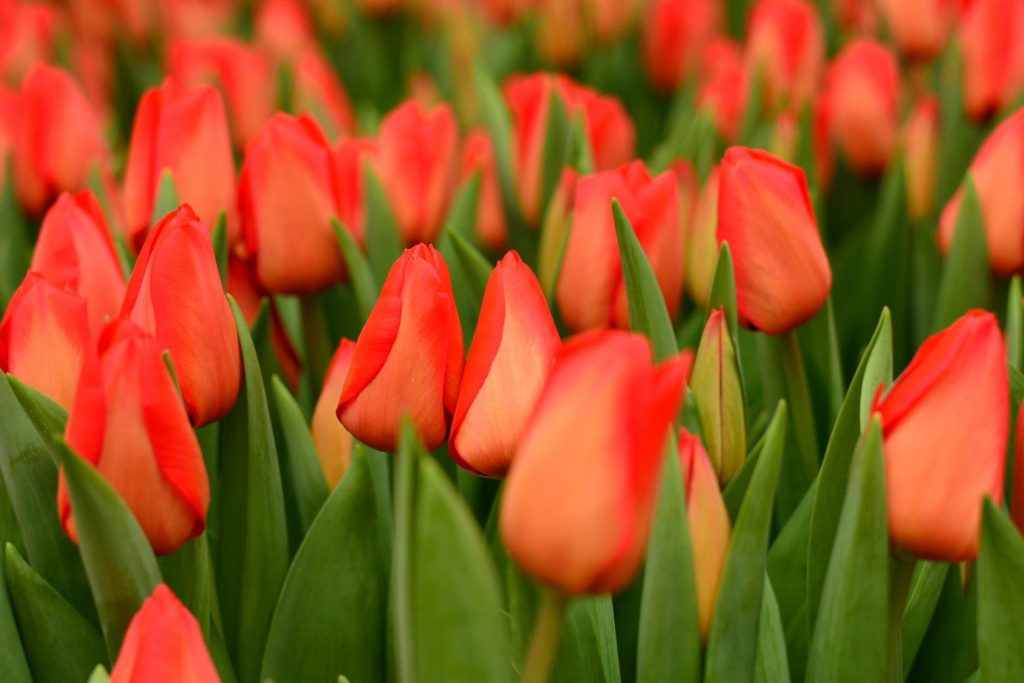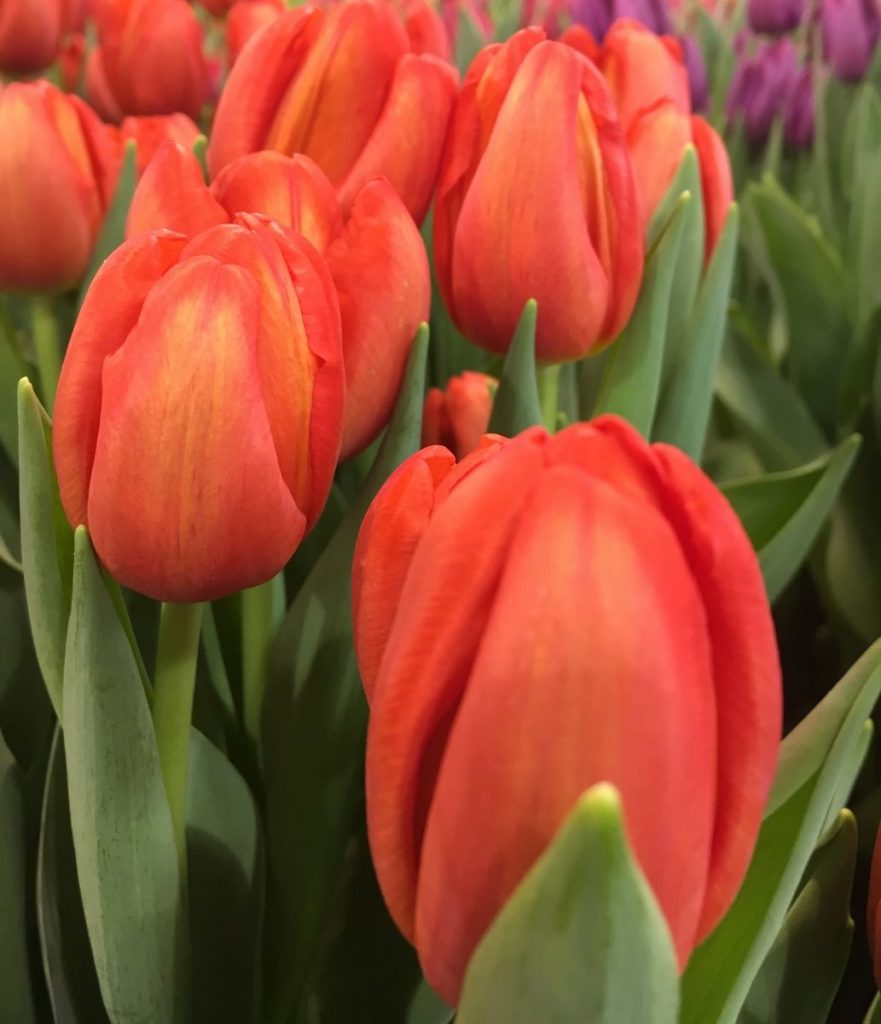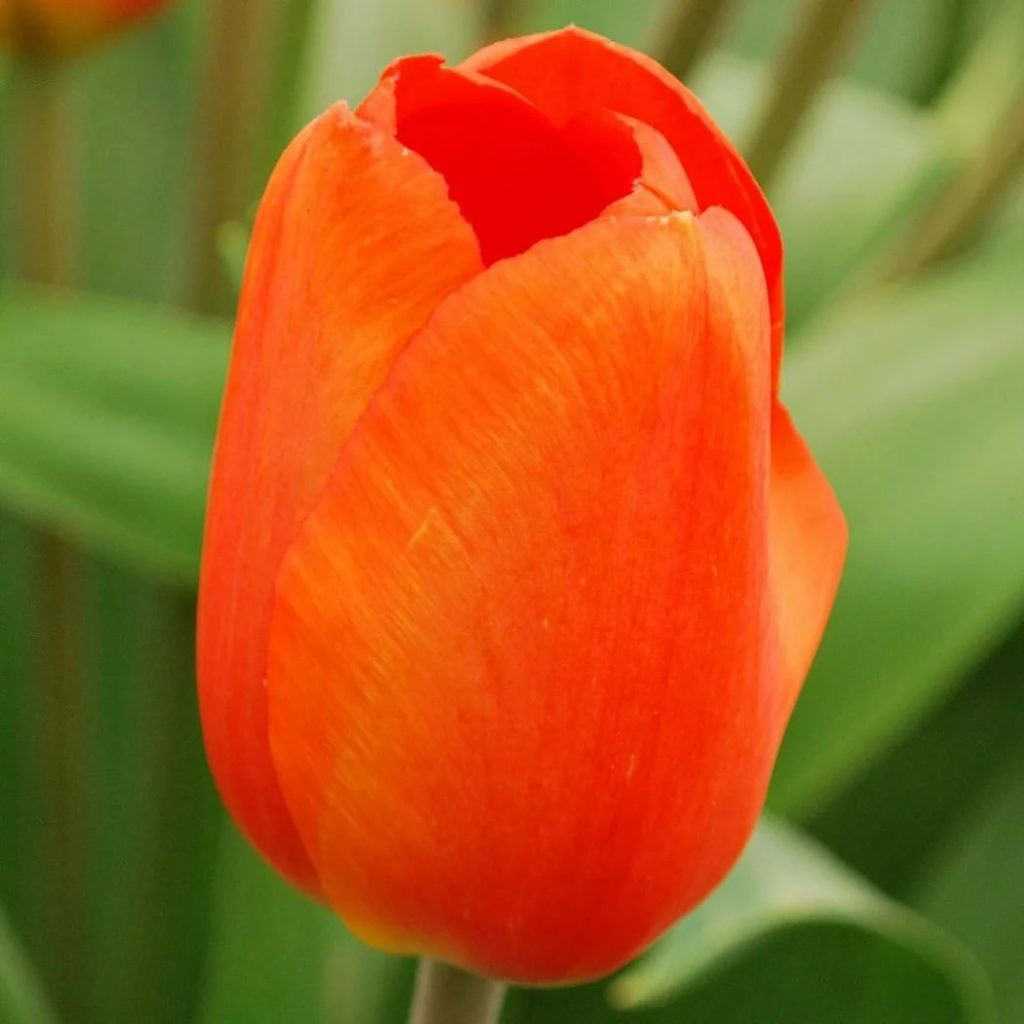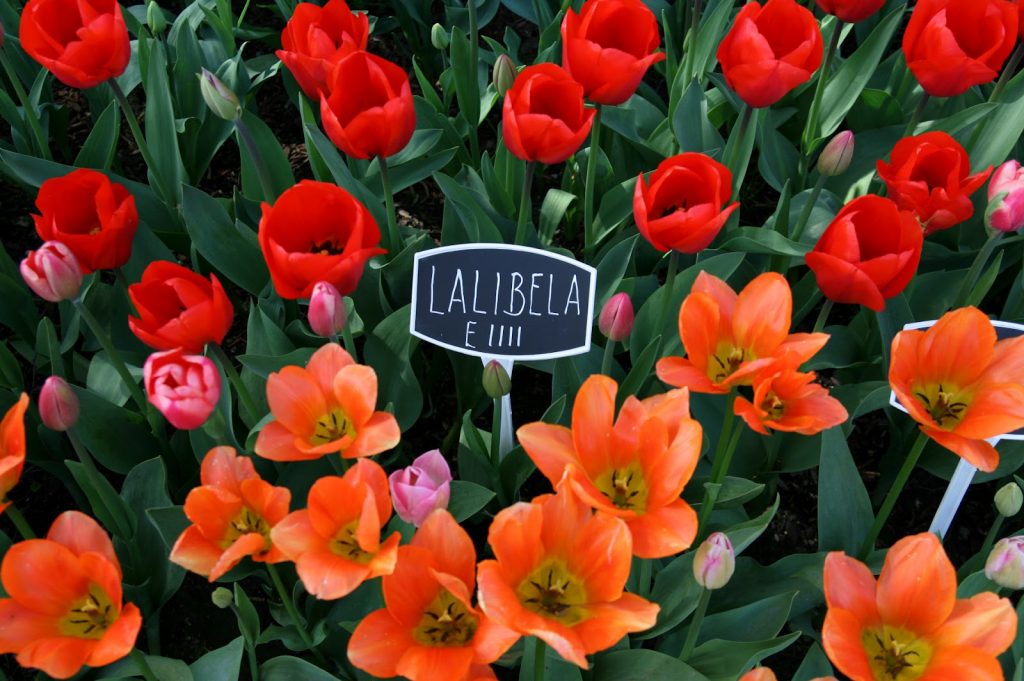Tulip Lalibela - a bright and beautiful variety
Tulip Lalibela is a Darwin hybrid bred by Dutch breeders and is popular in floriculture because of its simplicity in care. It is grown mainly for landscaping urban areas and parks. It is rarely used in cutting, because does not have a long shelf life.

Tulip lalibela photo
Varietal characteristics
Lalibela is considered to be relatively hardy, withstanding short-term drops in temperature and windy weather.
Differs in a long period of budding. Flowering occurs in mid-spring and lasts until the second half of June.
External description:
- stem height 60-80 cm;
- the bud is goblet, about 10-11 cm long, formed by tightly pressed petals of an elongated oval shape with a glossy surface, the color is contrasting red, sometimes with an orange tint;
- the corn bulb is large, often over 12 cm in diameter;
- the shape of the leaves is lanceolate, elongated, pointed at the ends, the color is rich green.
Landing features
The Lalibela tulip is planted in the fall, until the soil temperature drops below 10 ° C at a depth of at least 10 cm.

Lalibela tulip
In the middle lane, planting occurs in the second half of September, in regions with less favorable conditions - a little earlier, but 3-4 weeks before the expected date of arrival of autumn frosts.
Preparatory work
The plot is changed every 5 years. The place is chosen sunny. Neutral and slightly acidic soils are most suitable.
Do not plant tulips after potatoes and tomatoes, because these plants are susceptible to similar infectious diseases.
For use in bouquets, Lalibela is grown in greenhouse conditions, but the terms of its preservation in cut are significantly inferior to other varieties.
A month before planting, the soil is dug up, limestone is added to the acidified one.
Technology
Before planting, the bulbs are treated with a fungicide or a weak pink solution of potassium permanganate (potassium permanganate).
The optimum planting depth for Lalibela is up to 20 cm. The distance between the bulbs is about 15-20 cm, depending on the diameter of the planting material.
Average consumption - 36-48 corn bulbs per 1 m².
Care rules
Watering
Tulips need abundant watering, the regularity of which depends on the weather conditions.

Lalibela tulip description
The basic rule is to moisten the soil as the surface layer dries out. Waterlogging causes the development of fungal diseases of the bulbs and their subsequent rotting.
Periodicity:
- for newly appeared sprouts - every 8-10 days;
- for adult plants - every 2-3 days.
Top dressing
The flower culture is fed three times per season:
- at the stage of active growth of green mass, before flowering, nitrogen-containing fertilizers are used to stimulate the growth of shoots and foliage;
- at the beginning of budding - increase the introduction of potassium and phosphorus and reduce the proportion of nitrogen;
- after flowering - to feed the bulbs needed for further planting, completely removing nitrogen-containing complexes and increasing the percentage of potassium and phosphorus, as well as additionally adding boron and zinc.
Pruning and pre-winter preparation
Tulips should be pruned depending on the purpose of their use:
- in order to save the bulbs for subsequent planting, the plants are cut off, leaving 2 leaves each for further nutrition of the planting material;
- if root tubers are not needed, the flowers can be dug up with them or cut off "at the root";
- before the end of flowering, a withered bud with a part of the stem is cut off.
The dry method when laying in a cool room helps to extend the shelf life of cut Lalibela to 2 weeks.
Before the winter season, the planted bulbs are mulched with a layer of peat mixture or coniferous spruce branches. The shelter is removed after the snow melts. In regions with warm and snowy winters, the flower culture does not need insulation.
Treatment of diseases and pests
Often on Lalibela there is a bear, bulb mite, slugs and snails.

Tulip lalibela photo and description
For pest control:
- use insecticidal agents;
- traps are set around the perimeter of the flower bed;
- frightening plants are planted near flowers, for example, marigolds, mustard and the like.
The variety is susceptible to the main diseases characteristic of all bulbous plants - gray and root rot, variegation. For the purpose of prophylaxis and for the treatment of diseases of fungal etiology, they use treatments with fungicidal preparations. When signs of variegation infection appear, the diseased specimen is removed in order to avoid the widespread spread of the virus.
Gardeners reviews
The Lalibela tulip variety has a classic red color. It is grown mainly for landscaping. In cut, it is used much less often due to the short shelf life. Relatively frost-resistant and undemanding to care for.

